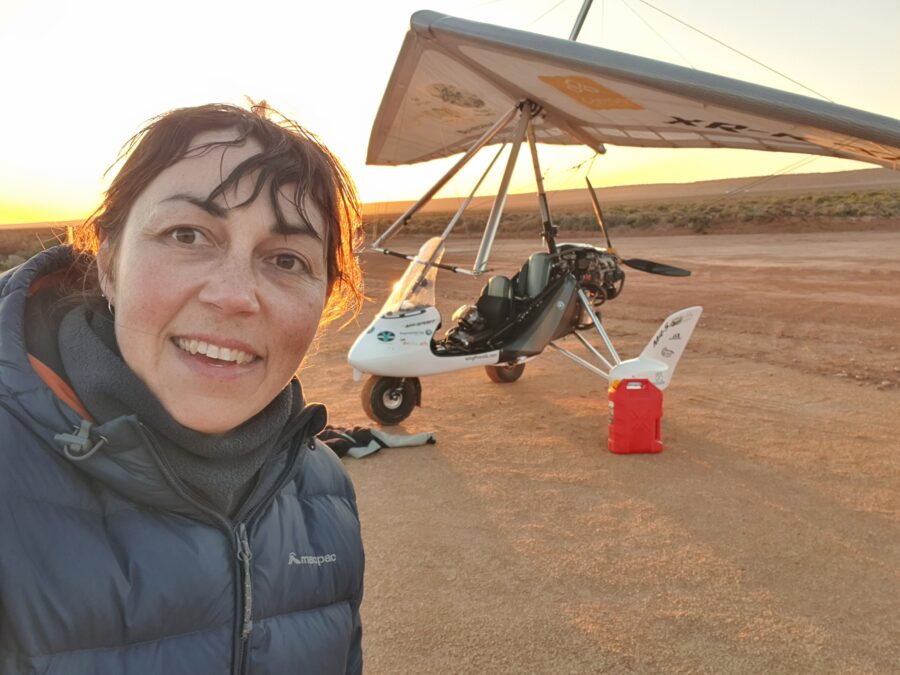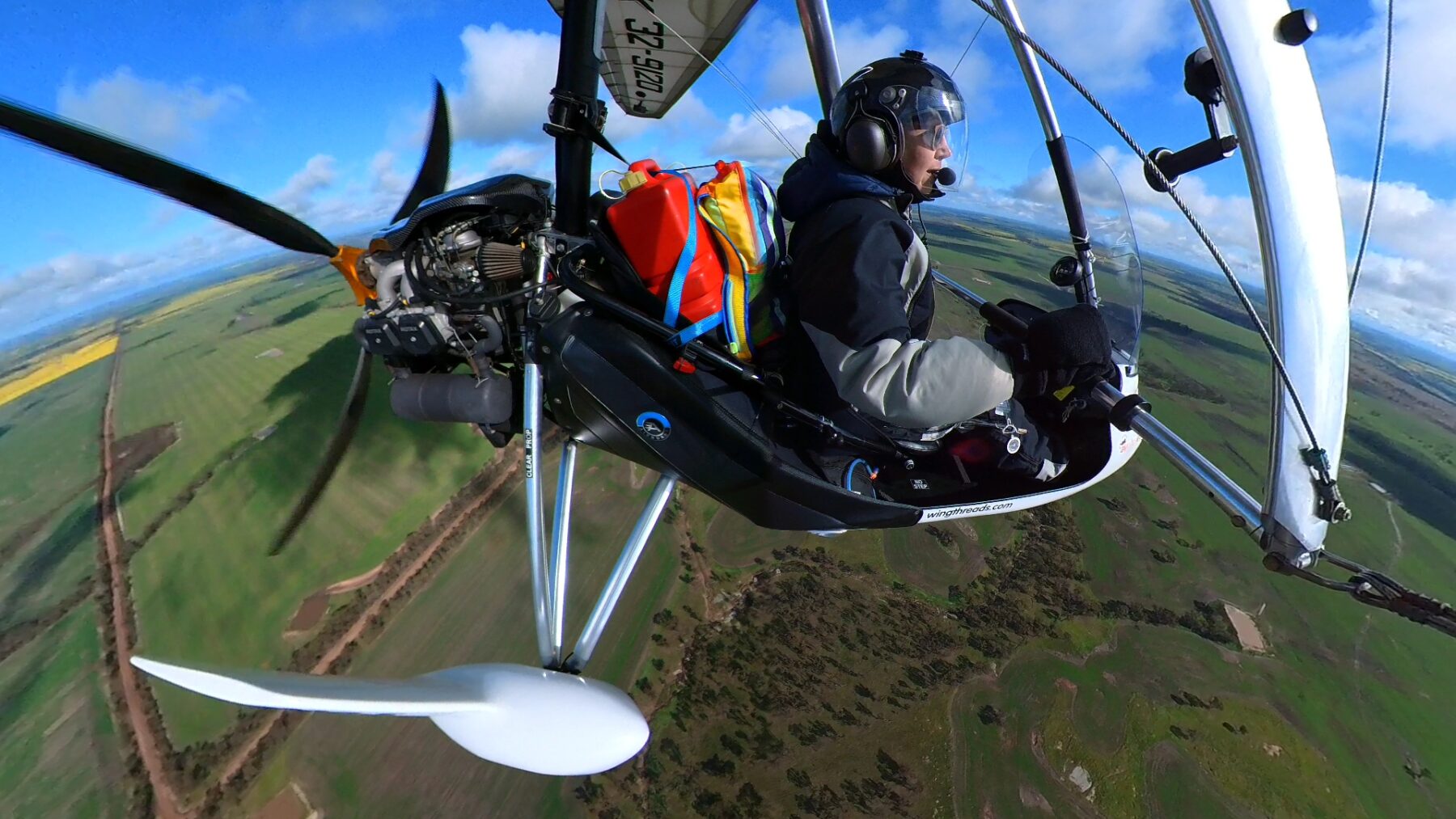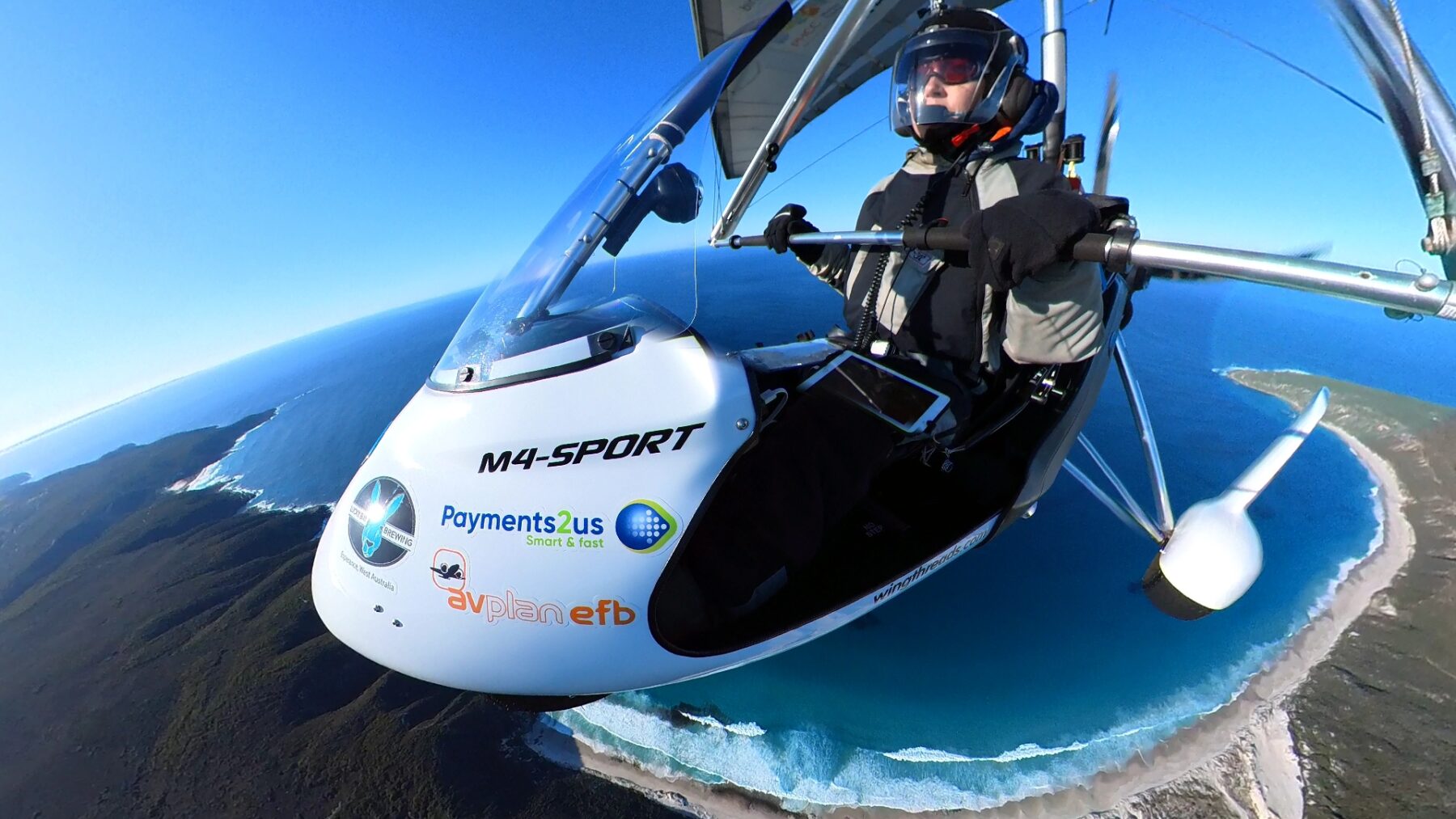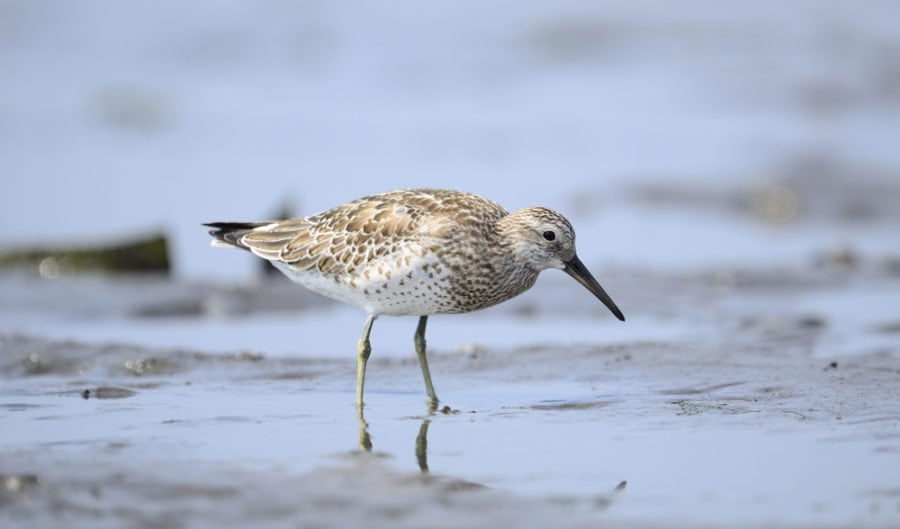Milly is flying around Oz in a microlight. Why is her journey a shore thing?

Zoologist Milly Formby is following shorebirds around Australia in a microlight aircraft but this isn’t your typical record-breaking expedition. The 42-year-old Australian Geographic Society-sponsored adventurer has spent years preparing for the flight in the hope more of us will fall in love with migratory shorebirds. Setting off from an airpark near Perth in June 2022, the Bird Life Australia project officer plans to travel just under 20,000 kilometres, stopping in at around 100 primary schools to chat to children. Her original aim of taking six months to complete the journey has well and truly been dashed; she’s currently a year in with a couple of months to go. But it’s all par for the course, with Milly determined not to rush but rather prioritise safety and her goal of raising awareness of the world’s most endangered group of bird species.
“I’m quite happy to do this adventure on nature’s time; that’s one of the things I’ve had to learn,” Milly says.
“Whenever I’ve tried to push things and make things happen, it doesn’t work. Nature will tell you when it’s time to do the next flight leg.”
The driving factor
Thirty-seven migratory shorebirds visit Australia every year via a “bird migration highway” known as the East Asian-Australasian Flyway. This is the biggest of eight global flyways, taking in 23 countries, from Russia and Alaska to Australia and New Zealand. As these birds, commonly referred to as waders, make their mammoth annual migrations, they stop at a chain of wetlands to feed and rest. However, these wetlands are disappearing.
“Wetlands are often seen as unappealing places, boggy swamps or boring old mudflats, so they get reclaimed and developed,” says Milly. “When that happens, the food is no longer there for the birds, and because they evolve to be highly specialised, some of these species can’t adapt quickly enough and die.”
Witnessing this habitat loss over a decade-long career in shorebird conservation is what prompted Milly to take to the sky. She hopes that through her journey, which she’s dubbed Wing Threads, people will connect with shorebirds and want to protect their wetlands.
“It’s my dream that one day birds like red-necked stints (Calidris ruficollis) and bar-tailed godwits (Limosa lapponica) will be household names like pandas, orangutans and koalas, and that their wetland habitats will be valued and protected,” she says.


Left to right: Red-necked stint (Calidris ruficollis); Bar-tailed godwit (Limosa lapponica). Image credits: shutterstock
By flying around Australia, Milly, who’s also the subject and illustrator of the children’s picture book A Shorebird Flying Adventure (CSIRO, 2022), is travelling a similar distance to what some of the birds undertake each year. However, instead of spanning just nine days to journey from Alaska to Australia like the bar-tailed godwit, Milly’s adventure is taking much longer. So how do you prepare to fly around Australia when you’ve never flown before?
The long road to take off
From light-bulb moment to take-off, it took Milly six years to prepare for her trip. First, she had to learn to fly. She chose a microlight for a couple of reasons. One: she heard it was relatively easy to get a licence. Two: the small aircraft allows her to respond to wind and currents just as a shorebird does. But feeling the elements more than a fixed-wing plane has its challenges. In a “fly-by-feel aircraft” she has to especially be attuned to weather conditions. Because of this, she tends to leave the ground either around sunrise or in the afternoon because there is less thermal activity, which means less turbulence.
Bad weather hampered the start of Milly’s journey, with her first four flight legs (from Perth to South West WA) taking her 2.5 months to complete. She also decided to spend four months in Newcastle, NSW, to wait for the wet season to pass in Queensland and because she couldn’t visit schools over the summer holidays. Once in Townsville, she paused again to wait for clouds, rain and wind to subside further north in Cairns. But instead of getting frustrated, Milly stays positive.
“You’ve just got to be patient and wait for the conditions,” she says. “There’s a lot to be said about going slow and taking your time. Not rushing.”

Up, up and away
Although Milly never aspired to be a pilot before this trip, she loved her first trial instructional flight.
“I thought it was the best and I got the flying bug really hard,” she says.
With 58 flight legs planned, Milly is currently crossing the top of Australia and on the home stretch, hoping to arrive in Perth in September. Her flight legs are around two to three hours (200–300km), and she generally does two flights each designated flying day (she doesn’t fly every day). This is the first time Milly has done anything like this, and she’s learnt a lot about herself along the way, such as being more resilient and driven than she realised.
“I think I’m learning a lot about leadership as well because I’ve never seen myself as a leader,” she says.
Not only is she spending evenings refuelling the microlight, planning the next day’s flight path, and charging all of her cameras, microphones and other technology, she’s also managing volunteers who’ve joined her, and co-ordinating school visits and media engagements. She’s juggling many balls and says the trip logistics are the main challenge.
“Getting in the plane and flying is quite easy by comparison,” Milly says with a laugh.
The adventure has also given her a newfound respect for what shorebirds are capable of.
“It’s taken me years to get my pilot licence, the experience I need to be able to do a cross-country flight,” she says.
“I’ve had to study navigation and had to have a plane built and learn how to use the systems within that aircraft to be able to do these short little flight legs… but these birds can do that at eight weeks of age.”
The years of effort is all worth it, however, if Milly can help spread the love for migratory shorebirds, and ultimately contribute to their survival.
“To be able to stand up and say ‘we are doing our part to make sure that these birds will be able to continue their migrations for many years to come’ to the world… I think that is something that we as Australians can and should be proud of.”
To follow Milly’s journey, go to wingthreads.com.



